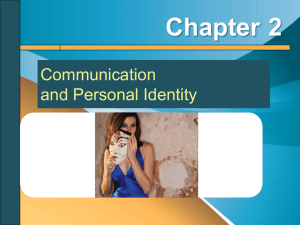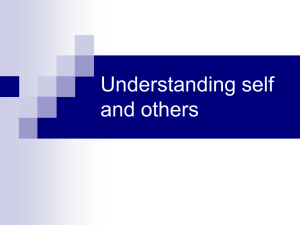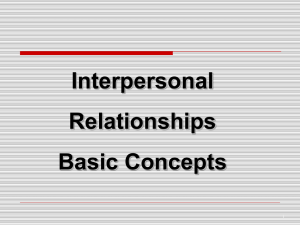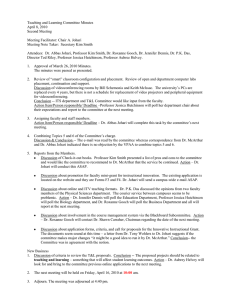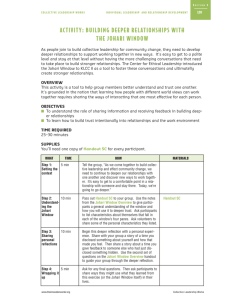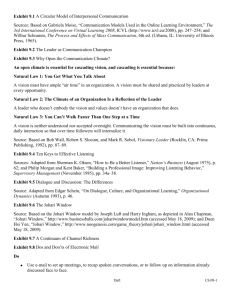INTRAPERSONAL COMMUNICATION
advertisement
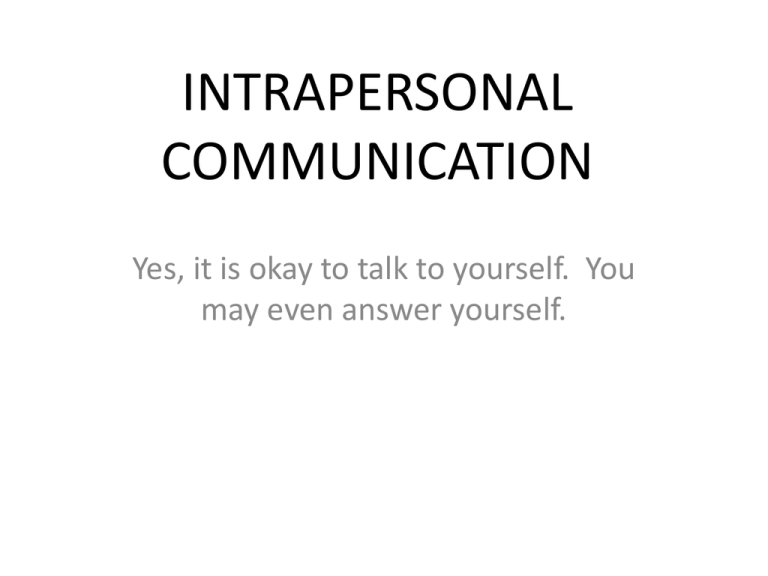
INTRAPERSONAL COMMUNICATION Yes, it is okay to talk to yourself. You may even answer yourself. Count the the # of Fs that appear FINISHED FILES ARE THE RESULT OF YEARS OF SCIENTIFIC STUDY COMBINED WITH THE EXPERIENCE OF MANY YEARS. Look at the chart below and say the COLOR you see, not the word printed there. YELLOW BLUE ORANGE BLACK RED GREEN PURPLE YELLOW RED ORANGE GREEN BLACK BLUE RED PURPLE GREEN BLUE ORANGE So, what’s happening? Why the conflict? Your right brain is trying to say the color, but your left brain insists on reading the word. Which Line Is Longer? SELF-CONCEPT • Everything one thinks & feels about oneself (Gamble & Gamble) • Those physical, social, and psychological perceptions of self resulting from our experiences and interactions with others. Components of Self-Concept • Self-image: the picture or image you have of yourself • Self-esteem: the value or worth you place on your self-image. The Three Selves • Real self – what you think of yourself when you are being most honest • Ideal self – who you would like to be or think you should be • Public self – the one you let others know Pygmalion Effect or Self-fulfilling Prophecy • Do you perform as you do because that is what you are capable of doing? OR • Do you perform as you do to meet the expectations of others? The Johari Window A conceptual model of selfdisclosure What you know about yourself What you don’t know about yourself What others know about you What others don’t know about you JOHARI WINDOW What you know about yourself What others know about you What you don’t know about yourself FREE OR OPEN What others don’t know about you JOHARI WINDOW What you know about yourself What others know about you What others don’t know about you What you don’t know about yourself FREE OR OPEN HIDDEN JOHARI WINDOW What you know about yourself What others know about you What others don’t know about you FREE OR OPEN What you don’t know about yourself BLIND HIDDEN JOHARI WINDOW What you know about yourself What others know about you What others don’t know about you What you don’t know about yourself FREE OR OPEN BLIND HIDDEN UNKNOWN JOHARI WINDOW What you know about yourself What others know about you What you don’t know about yourself FREE OR OPEN BLIND HIDDEN UNKNOWN What others don’t know about you JOHARI WINDOW Self-Disclosure • Is a risk-taking behavior • Is supposed be a reciprocal behavior • The history of a relationship is a history of its self-disclosure • When self-disclosure ends, so does the relationship PERCEPTION • The process by which we make sense out of experience • The process of selecting, organizing, and (subjectively) interpreting sensory data FACT VS. INFERENCE • FACTS are verifiable by observation • INFERENCES are assumptions based in facts as perceived –Interpolation – inference between knowns –Extrapolation – inference beyond knows; prediction Interpolation & Extrapolation 7 6 5 4 Series 1 Series 2 3 Series 3 2 1 0 Category 1 Category 2 Category 3 Category 4 Category 5 Category 6 STEREOTYPING Perceptual Constancy



